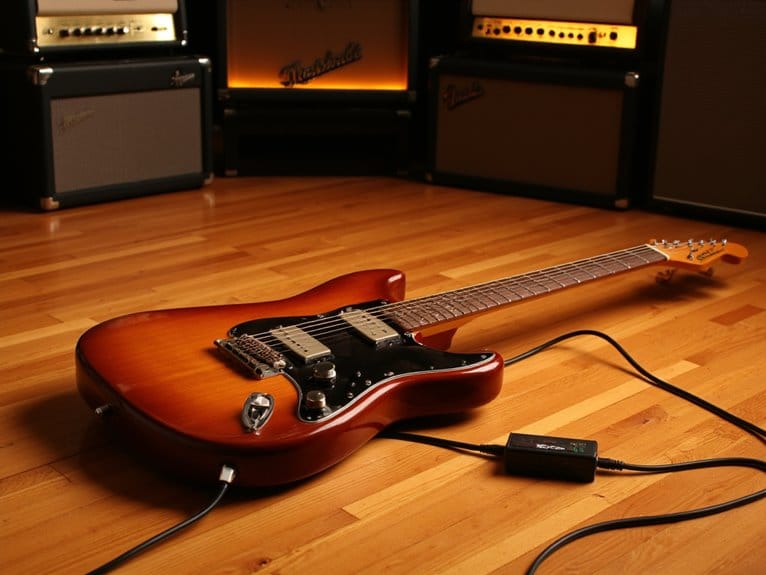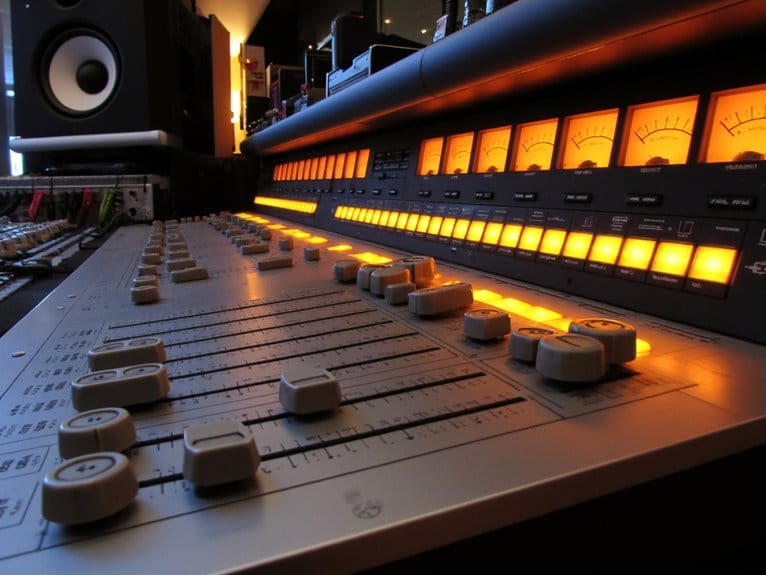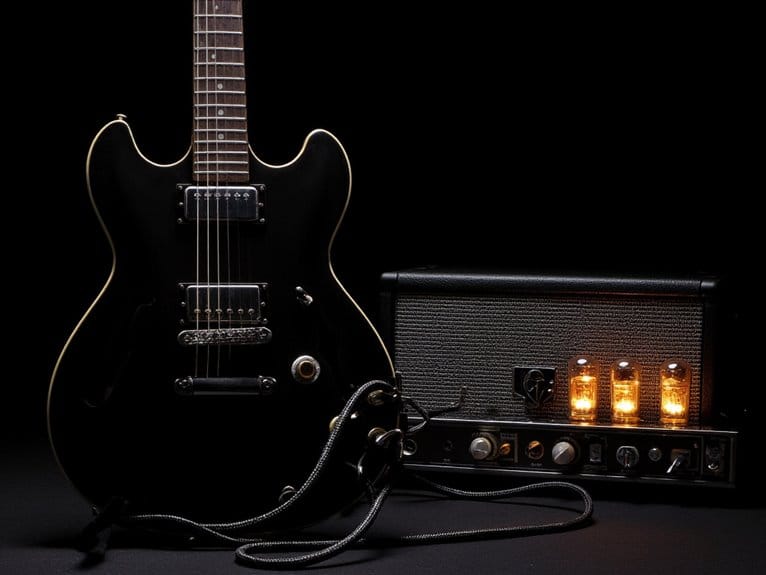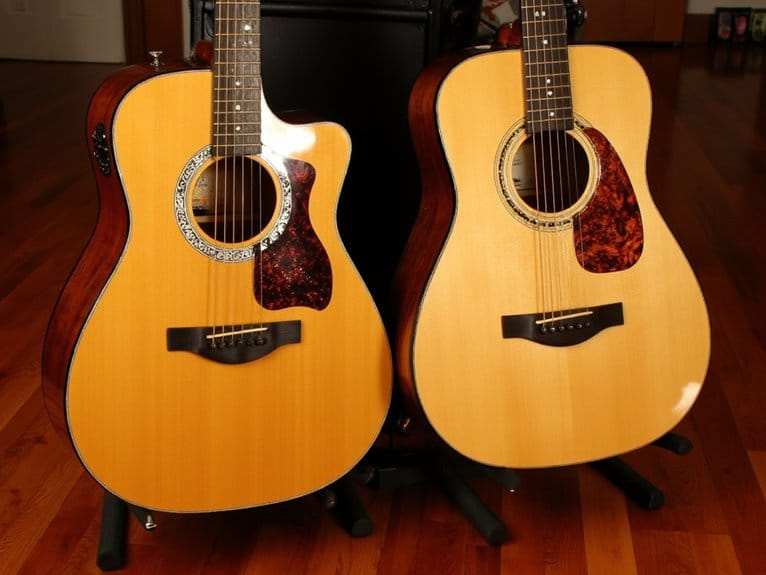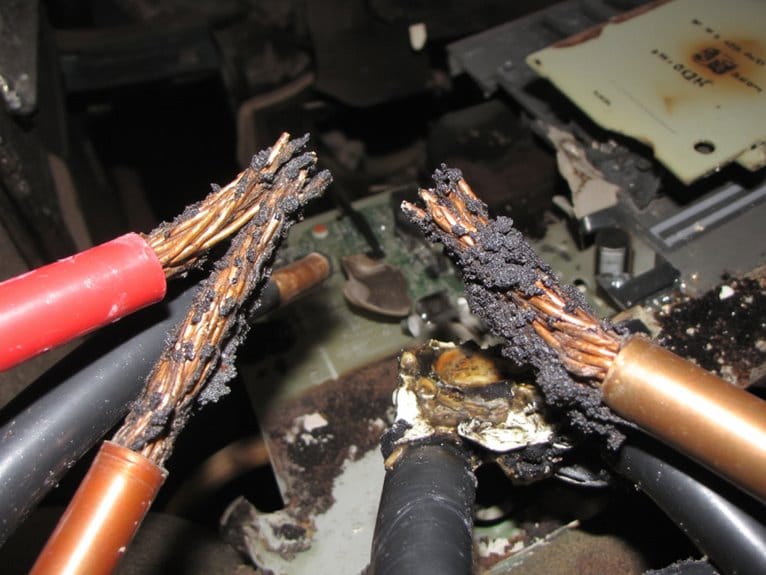What Is Re-Amping? Creative Guitar Processing Techniques
Re-amping transforms your guitar recording workflow by capturing clean direct input signals first, then routing them through amplifiers and effects during post-production using specialized reamp boxes that convert balanced DAW outputs back to instrument level. You’ll separate performance from tone shaping, allowing unlimited experimentation with different amps, settings, and microphone placements without re-recording. This technique works with 24-bit/192kHz conversion rates, requires quality DI boxes and balanced cables, and opens creative possibilities beyond traditional guitar applications. Discover how this process reveals entirely new sonic territories.
We are supported by our audience. When you purchase through links on our site, we may earn an affiliate commission, at no extra cost for you. Learn more.
Notable Insights
- Re-amping separates guitar performance from tone shaping by recording clean DI signals first, then processing through amplifiers later.
- Essential equipment includes quality DI boxes, reamp boxes like Radial Pro-RMP, balanced cables, and proper monitoring chain setup.
- Signal flows from DAW through reamp box converting balanced output to instrument level for natural amplifier response and processing.
- Creative benefits include experimenting with multiple amp settings, sharing DI tracks with musicians, and crafting distinctive tones post-recording.
- Modern applications extend beyond guitars to vocals and drums, enabling exploration of new sonic territories with various effects.
Understanding the Re-Amping Process and Signal Flow
The re-amping process transforms how we approach guitar recording by separating the capture of your performance from the shaping of your tone, and I’ve found this technique to be one of the most liberating workflows in modern recording.
You’ll record a clean direct input signal first, then route it back through amplifiers later, creating a two-step workflow that prioritizes performance flexibility over immediate sonic decisions.
The signal path flows from your DAW’s line output through a reamp box, which converts the balanced, low-impedance signal into an unbalanced, high-impedence instrument-level signal that your amp expects.
This conversion maintains signal integrity throughout the chain, allowing your amplifier to respond naturally to the re-amped guitar signal as if you were playing live. This approach also eliminates the need to re-record performances when you want to experiment with different amplifier tones or settings after the initial tracking session.
Your DAW setup requires two tracks to handle this workflow effectively: one DI recording track to play back your original performance and one reamped guitar track to capture the amplified sound through your microphone. Professional recordings typically utilize 24-bit/192kHz conversion rates to ensure the highest fidelity throughout the re-amping chain.
Creative Benefits and Tonal Possibilities
When you access re-amping’s creative potential, you’re basically gaining the ability to sculpt guitar tones with the same precision that a sculptor approaches marble, chiseling away sonic possibilities until you’ve revealed the perfect sound hiding within your original performance. With the advancements in technology, today’s tools allow you to explore a wide range of tonal landscapes, making it easier than ever to experiment with different sounds. Incorporating neural amp modeler features enhances this process, providing you with access to an extensive library of amp sounds and effects that can transform your original take into something extraordinary. This means your creative journey is not just a linear path but an expansive canvas where every session can yield a new masterpiece.
This creative experimentation separates performance capture from tone crafting, letting you focus entirely on playing first, then diving deep into tonal exploration afterward.
You’ll discover that one clean DI track can spawn dozens of distinctive sounds through different amp combinations, pedal chains, and microphone placements, basically turning a single performance into an entire palette of sonic possibilities.
I’ve found that this workflow eliminates the pressure of nailing perfect tones during recording sessions, dramatically improving both performance quality and final production results. Just as keyboard amplifiers require specific power output matching for different venues, re-amping demands careful attention to signal levels and impedance matching to achieve optimal results. You can also share DI tracks with other musicians and producers to access their unique gear collections and achieve sounds impossible with your own setup alone. The technique also works with non-traditional instruments like vocals and drums, opening up entirely new sonic territories beyond conventional guitar applications.
Essential Equipment and Modern Applications
Building your re-amping setup doesn’t require breaking the bank, but you’ll need several key components that work together seamlessly to transform your recorded dry signals back into living, breathing guitar tones. A quality interface and a good microphone are essential for capturing the nuances of your sound accurately. Additionally, using the best VST amp sims can elevate your re-amping process, providing a wide range of tones and effects that can be tailored to fit your musical style. With the right setup, you can achieve studio-quality results right in your home studio.
Essential devices include a quality DI box for capturing clean signals, an audio interface with dedicated line outputs, and a reliable reamp box like the Radial Pro-RMP that converts your DAW’s line-level audio back to instrument level with proper impedance matching.
Modern setups often incorporate passive reamp boxes with transformer isolation to eliminate ground loops, though active units offer additional gain control and integrated DI functionality.
You’ll also need balanced cables for clean signal transmission, studio monitors for accurate playback monitoring, and strategic microphone placement to capture your amplifier’s response during the re-amping process. This approach allows complete creative freedom to experiment with different amplifier settings and effect combinations without compromising the original recorded performance. When setting up your monitoring chain, it’s crucial to watch for amplifier noise and unwanted hum that can interfere with your reamped signals.
On a final note
You’ve now got the foundation to explore re-amping’s creative potential, whether you’re chasing vintage tube warmth or experimenting with unconventional speaker combinations. I’ll admit, the initial setup can feel overwhelming, but once you’ve dialed in your signal chain, you’ll discover tonal possibilities that traditional recording methods simply can’t match. Don’t overthink the process-start with basic re-amping techniques, then gradually incorporate more adventurous approaches as your confidence builds.

